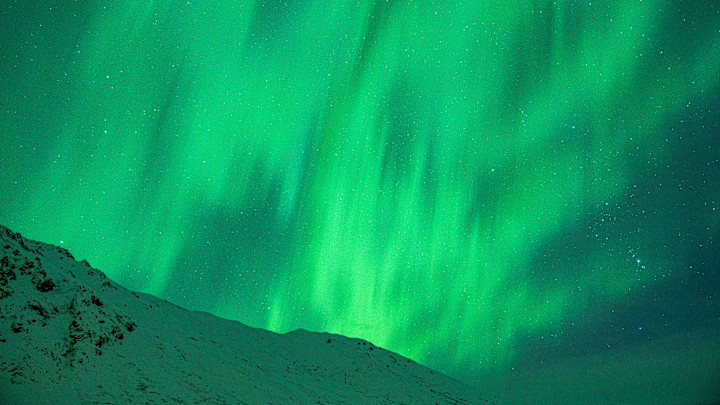Sky-gazers travel far and wide to see the aurora borealis—or the northern lights—dance across the night sky. This year, many people who normally miss the light show got to see it from their backyards as a result of increased solar activity. If you missed it in 2024, don’t worry: Scientists say the super-charged auroras will continue for a couple years, possibly peaking in 2026 and 2027.
In October of this year, representatives from NASA, the National Oceanic and Atmospheric Administration (NOAA), and the Solar Cycle Prediction Panel reported that the sun had reached its solar maximum period. This event occurs during the 11-year solar cycle driven by changes in the sun’s magnetic field.
The solar maximum is the most active phase of the cycle. It’s characterized by an increase in dark sunspots that release solar flares more frequently and intensely. When the flares reach Earth, they cause auroras when they interact with particles in the atmosphere. In short, the uptick in solar activity makes it more likely for the northern lights to appear at lower latitudes.
This explains the auroras that were visible as far south as Florida in October. But if you missed that dazzling display, don’t fret. Solar physicist Pål Brekke told Space.com that the northern lights’ peak happens a few years after the solar maximum. “This means that 2026 to 2027 should be great for hunting the northern and southern lights,” he explained.
The delay is primarily due to coronal holes, or regions in the sun’s outermost atmosphere that are cooler than the surrounding areas. These regions have unipolar magnetic fields (meaning the polarity is significantly north or south), allowing wind to escape from the sun into space. The coronal wind affects Earth’s magnetic field, causing geomagnetic storms that produce auroras. Earth-directed coronal holes are common in the decaying phase of the solar maximum which we are about to enter.
On an atomic level, the northern lights occur when electrically-charged solar particles collide with atoms in the Earth’s atmosphere. When they react with each other, the energy is released as light. As a result, we’re treated to a spectacle.
If you’ve always wanted to see the northern lights, check out these budget-friendly places to scope out the display.
Read More About Space:
